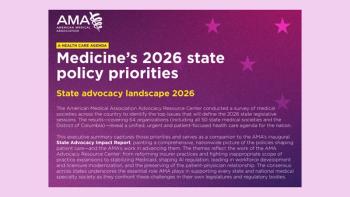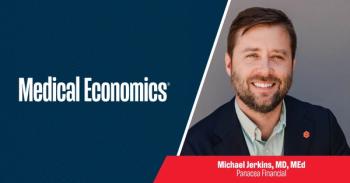According to a recent peer-reviewed study, health spending is projected to grow 5.4% from 2022-31, and account for roughly 20% of the U.S. economy by the end of that period. That would represent a welcome stabilization in the health care industry following the COVID-19 pandemic and its aftermath. Yet, in 2023, profit margins of individual hospitals and health systems still presented a mixedpicture.
As independent practitioners set their budgets for 2024, a unique set of priorities has emerged. New digital tools bring the potential to increase health equity and improve patient outcomes in financially strained regions. Expanded access to ACA-affiliated insurance plans also bodes well for access to basic health care. Meanwhile, the looming threats of digital cyberattacks and increased violence against health care workers will force providers to remain vigilant on multiple fronts.
Here are five trends to watch in the business of health care in 2024:
Focus on information security
In January, a data breach affected nearly 2 million patients in Massachusetts, and ultimately led to a class action lawsuit. Later that month, a $4.3 million settlement was agreed to in Montana. These cases came less than two years after a $6.85 million class-action settlement was reached, compensating more than 10 million patients in Washington and Alaska.
In each case, hackers accessed sensitive medical information and other private data. The need to protect patients’ data from cyberattacks has never been higher ― and the penalties never steeper for practices whose systems are breached.
For any business struggling under the weight of negative profit margins, it’s tempting to reduce investments in digital security. Yet a data breach could be financially devastating to a practice ― and erode the public trust in your business. Expect more vigilance in the cat-and-mouse game between hackers and cybersecurity contractors going forward.
Addressing health care disparities
The effects of racial gaps in health care are well-documented. African American communities are more vulnerable to severe weather and floods, and are at higher risk to experience asthma as a result of polluted air, than other communities. Black women suffer from three times the maternal mortality rate as white women. People of color face disproportionate barriers to accessing mental health services.
Adapting solutions to address these and other sources of health disparities will take on greater priority as a means to reducing the long-term burden on practitioners who struggle to reach socioeconomically disadvantaged patients. A May 2023 study estimated the cost of increasing health care disparities on the U.S. economy at $451 billion.
The Centers for Medicare and Medicaid Services recently recommended more aggressive data collection to identify risk factors ― underlying health conditions, social factors, access to care, etc. ― to support providers’ business initiatives. For example, CMS recommends using data “to support health care organizations in building strategic relationships with other local community partners to better understand and meet patients’ unmet social needs.”
Expanded access to ACA insurance plans
One key driver in health care disparities is access to basic coverage. As of 2021, Native Americans and Hispanics were twice as likely to be uninsured as whites, according to a Kaiser Family Foundation survey. CMS recommends “addressing gaps related to health insurance network adequacy, opportunities to enroll in coverage, affordable, comprehensive coverage options, and provider availability and shortages.”
Some progress is being made on that front. According to the Department of Health and Human Services, an additional 9.3 million people gained Affordable Care Act-related coverage plans between 2021 and 2023. About 4 in 5 individual ACA-related plan enrollees are now subsidized through policies included in the Inflation Reduction Act of 2022. As awareness and access to these programs increase, look for ACA enrollment numbers to increase as well.
Providers bringing AI into health care
Artificial intelligence and machine learning tools have been gaining gradual acceptance in health care for several years, but the full range of practical benefits and applications have yet to be realized. A few early examples of AI adoption underscore a growing sentiment within the industry: the positives outweigh the negatives.
Take coding. Without much heavy lifting, a medical coder can use an AI script to review 1,000 patient charts and flag any that meet certain criteria. In hospitals where coding errors have been costly, this is an especially useful time- and money-saving tool that reduces the burden on human coders. Such AI tools are relatively inexpensive, making them available to private practices of all operating budgets.
The potential for biased datasets to exacerbate disparities in medical outcomes through the use of AI is beginning to get the attention it deserves. AI tools also have the potential to reduce disparities. Anyone with an internet connection can access ChatGPT and input a question focused on their personal health care needs. Practices constrained by long driving distances for patients within a broad area can educate their patients on how to use an AI-based app to pre-screen their own symptoms at home.
Preventing violence against healthcare workers
More than one-third of healthcare workers experienced some form of workplace violence between Jan. 2020 and March 2022, according to a recent study. Health care workers are trained to “always do no harm.” But what happens when they are in the difficult position of being the target of abuse ― verbal or physical ― from the patients and families they serve?
While rarely fatal, attacks against health care workers are five times more common than in other workplaces. Post-traumatic symptoms among victims are common. To maintain the quality of the work environment for providers and their patients, the American Association of Medical Colleges reports a trend of adopting new safety standards to prevent violent incidents before they arise.
As more private practices experience this growing phenomenon first-hand, look for policies and procedures to evolve in response.
Hilton M Hudson, MD, FACS, is a board-certified cardiothoracic surgeon and the Chief of Cardiothoracic Surgery at Franciscan’s Michigan City and Olympia Fields health systems. He is also the CEO of HPC International (HPC), a purchased services supplier for health care, corporations, and academic institutions.









